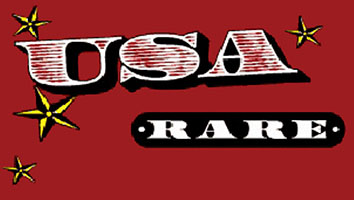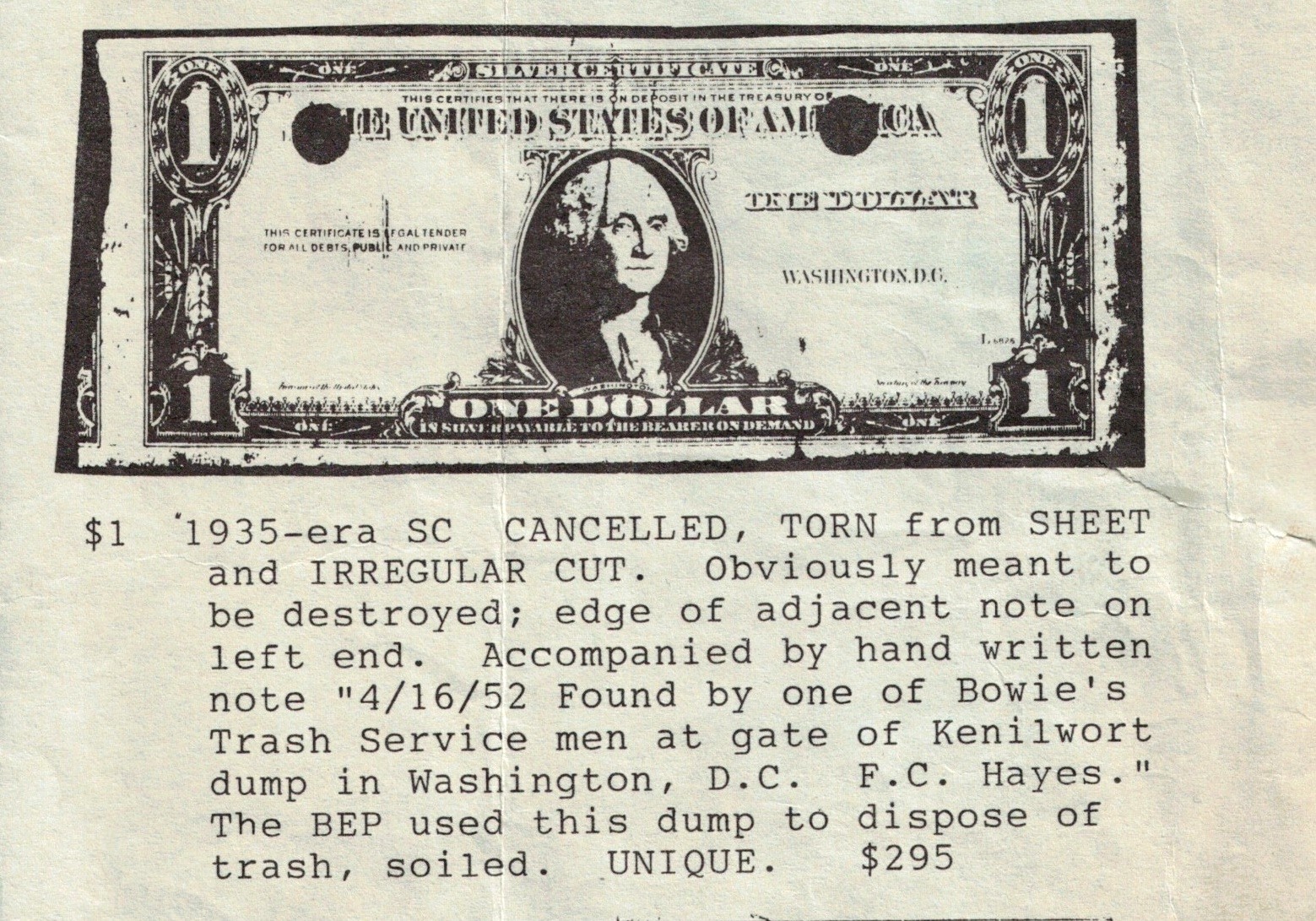Description
In 2023, I was grateful to have gone through the fancy serial number & Error Collection of PETER HUNTOON’s Collection. It was at the Long Beach California Coin and Currency Expo. This $1 Silver Certificate was posted right from the start on the first page. Seeing it was missing the third print, cut funny? Also burned on one side. Cool, but knew there much more to view. I skipped passed it and bought a handful of notes from the album.
Two years later, Dealer Robert Calderman from Paper Money Depot, who had showed me the collection in 2023, had the note in with a bunch of other errors he was selling. I did look at the note previously again…. I tried buying it, but we didn’t come together on the grouping. So, we saved it for another time… or as Robert would say? It’s “Marinating.” I was able to put together a deal and purchase the note recently at the Baltimore Show this March 2025. Through some research, I was able to find one other from an early ’80s price list of Dr Fredrick Bart. At the time, it may have been unique… but like most notes in today’s world of collecting, it’s a matter of time before a similar or a duplicate arrives. It’s just sitting in a collection somewhere, or a trash dump waiting to be found?
Enclosed is a link to Peter Huntoon’s… Quick story on this exact note. CANCELLED 1935 SERIES SILVER ERROR
“The story by Peter was written years ago, only to be published in By Numismatic News in July 2024”
*The sheets were punched out with holes to be destroyed and burned. Someone took this portion from the sheet, cut it with scissors and spent it! Same as Fred’s note picture on his error price list.
*Bowies Trash Service, which is still in business…. going on 87 years: was delivering trash from the Bureau of Engraving and Printing to the Kenilworth Landfill. This is where the above note pictured from Fred’s error price list was found at the gates of the landfill.
INFO:
- The Early Days – Burning Currency: In the late 19th and early 20th centuries, burning was a primary method for destroying unfit or defective U.S. currency. This was carried out in highly secure facilities to ensure the notes were completely destroyed. The use of burning was practical at the time, but it raised concerns about safety, environmental impact, and efficiency as time went on.
- Transition to Shredding: By the mid-20th century, the BEP began transitioning to shredding as a safer and more controlled method. Shredding reduces the currency into tiny, unrecognizable pieces, which are often recycled or disposed of responsibly.
- Modern Methods: Today, the BEP uses state-of-the-art machinery to shred unfit or error currency. The shredded material can even be repurposed—for instance, the BEP occasionally offers small bags of shredded money as souvenirs for educational or promotional purposes.
The move from burning to shredding reflects broader changes in technology, security, and environmental awareness.
*The Kenilworth Park Landfill Site (Site) is located within Anacostia Park, a unit of National Capital Parks – East (NACE), on the eastern bank of the Anacostia River. The Site is divided into two areas, Kenilworth Park North (KPN) and Kenilworth Park South (KPS). The areas are separated by Watts Branch, a stream that flows into the Anacostia River.
From 1942 until 1970, the District of Columbia (DC) used the Site for municipal solid waste disposal. Municipal waste incineration, incinerator ash disposal, and landfilling of municipal solid waste occurred at the Site. By the 1970s, the entire landfill (KPN and KPS) had ceased operations, was covered with soil, revegetated, and reclaimed for recreational purposes. KPN currently contains athletic fields which are actively used for recreation. KPS is currently undeveloped and not used for active recreation.
This note…. might not be much, but it’s a great conversational piece to add to the collection. N.F.S
Happy Hunting~!




